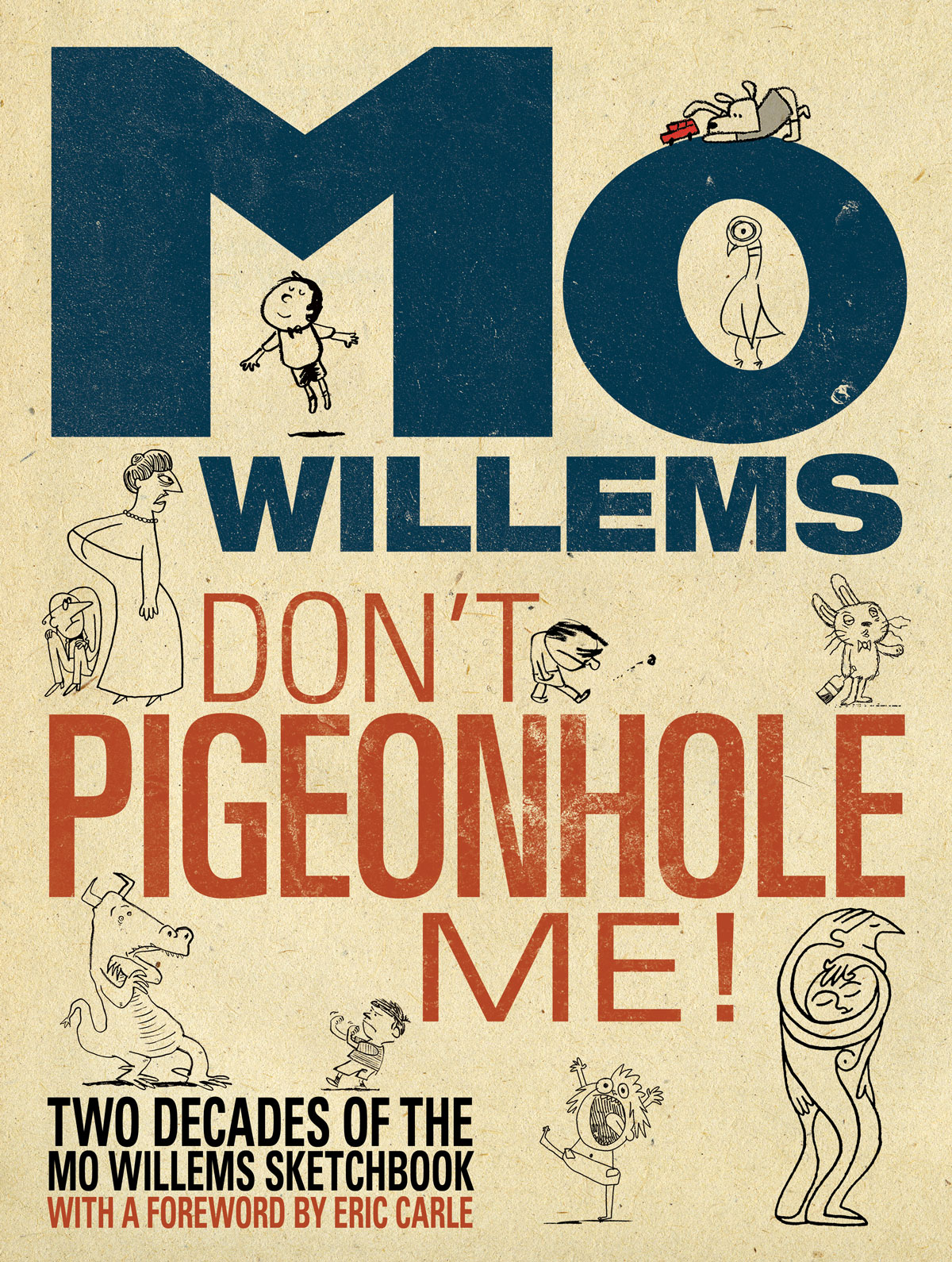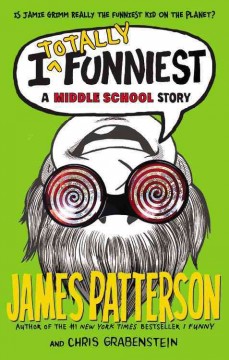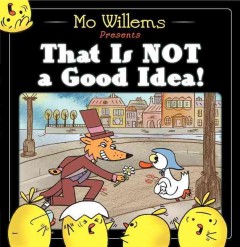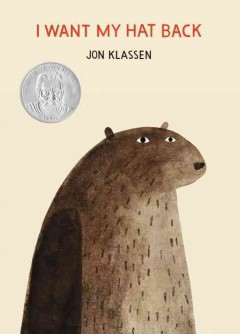 As I am an adult (in theory, anyway), I hadn’t read children’s books in quite some time. But having worked here at the South Branch for over a year now, I’ve found myself reacquainted with the art of the kids’ book. Talking to kids about what they like, reading the new books as they come in, finding new options for story times are part of what makes my job so amazing. In terms of the kids’ books, quite frankly, I’ve been enchanted and in a much different way then when I was reading those books as a kid. There is an enormous amount of talent out there from new authors who not only “get” kids, but can appeal to adults, too. Many modern children’s book authors seem to be able to give the adult, who will often be reading to the child, a quick “wink, wink” in a joke, or break the fourth wall or do something that little kids won’t always notice, simply because they don’t have the life experience to do so yet. This is what made shows like the Looney Tunes cartoons or The Muppet Show so successful. Adults and kids could enjoy them, and still do. (If you’ve ever searched Netflix to see if Bugs Bunny or Garfield cartoons are available, you know exactly what I’m talking about.) Kids’ books can have that same appeal.
As I am an adult (in theory, anyway), I hadn’t read children’s books in quite some time. But having worked here at the South Branch for over a year now, I’ve found myself reacquainted with the art of the kids’ book. Talking to kids about what they like, reading the new books as they come in, finding new options for story times are part of what makes my job so amazing. In terms of the kids’ books, quite frankly, I’ve been enchanted and in a much different way then when I was reading those books as a kid. There is an enormous amount of talent out there from new authors who not only “get” kids, but can appeal to adults, too. Many modern children’s book authors seem to be able to give the adult, who will often be reading to the child, a quick “wink, wink” in a joke, or break the fourth wall or do something that little kids won’t always notice, simply because they don’t have the life experience to do so yet. This is what made shows like the Looney Tunes cartoons or The Muppet Show so successful. Adults and kids could enjoy them, and still do. (If you’ve ever searched Netflix to see if Bugs Bunny or Garfield cartoons are available, you know exactly what I’m talking about.) Kids’ books can have that same appeal.
The sheer variety of different types of kids’ books out there is staggering and this is a good thing! (Well, maybe not for those of us who have to pare down the list of truly great books to fit within our budget, but for readers it’s a good thing.) I’m a staunch proponent of letting kids read whatever they want. As long as they’re spending time enjoying reading, that’s what’s most important. The variety of kids’ books allows kids the opportunity to express themselves as readers and increases the likelihood that something will be there for them to connect with. Authors seem to be recognizing this more and more and are engaging kids in creative, genuinely fun ways.
But why on earth, on a blog that’s largely going be be read by adults, would I be touting the appeal of children’s books? Don’t I have any sense of who this audience is? What I think is that the people who come to this blog are open-minded readers, regardless of age. Having rediscovered the art of the picture book and the joyful simplicity of a kids’ story, I’ve come to realize that kids’ books should not be limited only to children (or only to those adults who have children) and here are a few reasons why:
1) Kids books are fun to read! Not only are children’s books broaching an incredible variety of topics, but they are designed to engage a reader. It doesn’t matter if your 5, 50 or 105; a good story is a good story. At least once a year, the Classics book group revisits a children’s classic (Charlotte’s Web and The Lion, The Witch and The Wardrobe are among the titles we’ve discussed) and we always find these discussions to be lively and meaningful. Not only that, but we often find interpretations we couldn’t possibly have picked up on as kids, but are there nonetheless. It brings these books to a whole new level. Had we just left them in our childhood memories, we would never have discovered the pleasure and new themes that revisiting a kids’ book can bring.
2) Kids’ books are easy to read! Let’s face it, we all have those times when we want to read something about as challenging as a catalog. Children’s books are a great way to shift gears from an intense read or just to take a break from adulthood for a bit. (There’s a good reason why Classics schedules the children’s read for December, during the peak of holiday madness.) Silly stories are often the best for this type of a break and if there’s one thing that kids’ books know how to do well, it’s make someone laugh. The best ones will make you laugh while making you just a little uncomfortable for laughing at such a thing. Plus there’s no pressure to write a book report when you’ve finished.
3) Kids books are art! Children’s literature is not written or illustrated by kids (usually). Children’s literature is created by adults: adults who have sophisticated views of the world and who are talented enough to crystallize complexity into something simple and meaningful. Illustrators are artists, many of whom have higher education to achieve such skills. If your starting to second-guess me on this one, please feel free to check out The Carle Museum of Picture Book Art in Western MA. Named after picture book creator and legend Eric Carle, this museum celebrates picture books not only as literature that can engage children (and adults- lest we forget the point of this post) but as honest-to-goodness art that deserves to be put in such a location and admired both in and out of it’s picture book context. Need more proof? Celebrated picture book creator Mo Willems (and all-round, utter genius, at least in my humble opinion) has had exhibits of his work at the R. Michelson Galleries (also in Western MA) and is currently on display at the High Museum of Art in Atlanta. As a matter of fact, not all of his art on display is even related to picture books, further supporting my statement that illustrators are artists in their own right. If you still don’t believe me, check out Don’t Pigeonhole Me: Two Decades of the Mo Willems Sketchbook, a brilliant book of Willems’ art designed for adults and definitely not suitable for children, but has all of the qualities that make his children’s books so amazing.
If I’ve convinced you to try a children’s title or two, here are a few places you can start; and if I haven’t convinced you, here are a few books that I think adults can easily enjoy:
Timmy Failure: Mistakes Were Made by Stephan Pastis
 Pearls before Swine cartoonist Stephan Pastis wrote a book (actually a series of books) and just like his comic strip, they are hilarious. Timmy Failure (yes, that’s his last name) is just trying to make his private detective business be the most successful ever, but things like school, his mom and his friends seem to keep getting in the way. His best friend is a polar bear named Total (yup, Total Failure). Is he an imaginary friend? Does Timmy really tame and befriend a polar bear? These are things that kids may not pick up on, but adults probably will. Regardless of the polar bear’s status, he’s my favorite character in the book. It got me laughing out loud and as far as I’m concerned, that makes it a good read at any age.
Pearls before Swine cartoonist Stephan Pastis wrote a book (actually a series of books) and just like his comic strip, they are hilarious. Timmy Failure (yes, that’s his last name) is just trying to make his private detective business be the most successful ever, but things like school, his mom and his friends seem to keep getting in the way. His best friend is a polar bear named Total (yup, Total Failure). Is he an imaginary friend? Does Timmy really tame and befriend a polar bear? These are things that kids may not pick up on, but adults probably will. Regardless of the polar bear’s status, he’s my favorite character in the book. It got me laughing out loud and as far as I’m concerned, that makes it a good read at any age.
I Totally Funniest by James Patterson
 Love him or hate him for his adult fiction, James Patterson actually writes some pretty decent kids’ fiction. It’s funny, it’s charming, it covers problems kids may actually have to deal with in there lives, but there’s a certain level of an adult perspective here that is appealing. There’s also a certain level of fantasy that keeps the problems from hitting too close to home. It’s a well-crafted book and worth giving a a try.
Love him or hate him for his adult fiction, James Patterson actually writes some pretty decent kids’ fiction. It’s funny, it’s charming, it covers problems kids may actually have to deal with in there lives, but there’s a certain level of an adult perspective here that is appealing. There’s also a certain level of fantasy that keeps the problems from hitting too close to home. It’s a well-crafted book and worth giving a a try.
That Is Not a Good Idea by Mo Willems
 This is a lesser known work of Willems’s but like all of his books, it’s written with a rare combination of glee, sophistication, silliness and surprise. Where else can you find a silent film style picture book with fairy tale-like critters and a punchline that will leave even the most jaded adult cracking up. Whatever the book might tell you, Mo Willems is ALWAYS a good idea.
This is a lesser known work of Willems’s but like all of his books, it’s written with a rare combination of glee, sophistication, silliness and surprise. Where else can you find a silent film style picture book with fairy tale-like critters and a punchline that will leave even the most jaded adult cracking up. Whatever the book might tell you, Mo Willems is ALWAYS a good idea.
I Want My Hat Back by Jon Klaussen
 This book and its similar but not-quite-a-sequel This Is Not My Hat are amazingly sophisticated works. Funny, poignant and with great artwork, these books will also leave adults doing a bit of a double take wondering: “That didn’t really just happen in a kids book, did it?” Do I have you intrigued? Good! Go read it.
This book and its similar but not-quite-a-sequel This Is Not My Hat are amazingly sophisticated works. Funny, poignant and with great artwork, these books will also leave adults doing a bit of a double take wondering: “That didn’t really just happen in a kids book, did it?” Do I have you intrigued? Good! Go read it.
One of the best things about libraries is that you can read whatever you want in a judgment-free zone. So go forth this weekend and experiment. Read a chapter book, laugh at wacky picture book antics and indulge in a bit of nostalgia. You’ll be glad you did.
